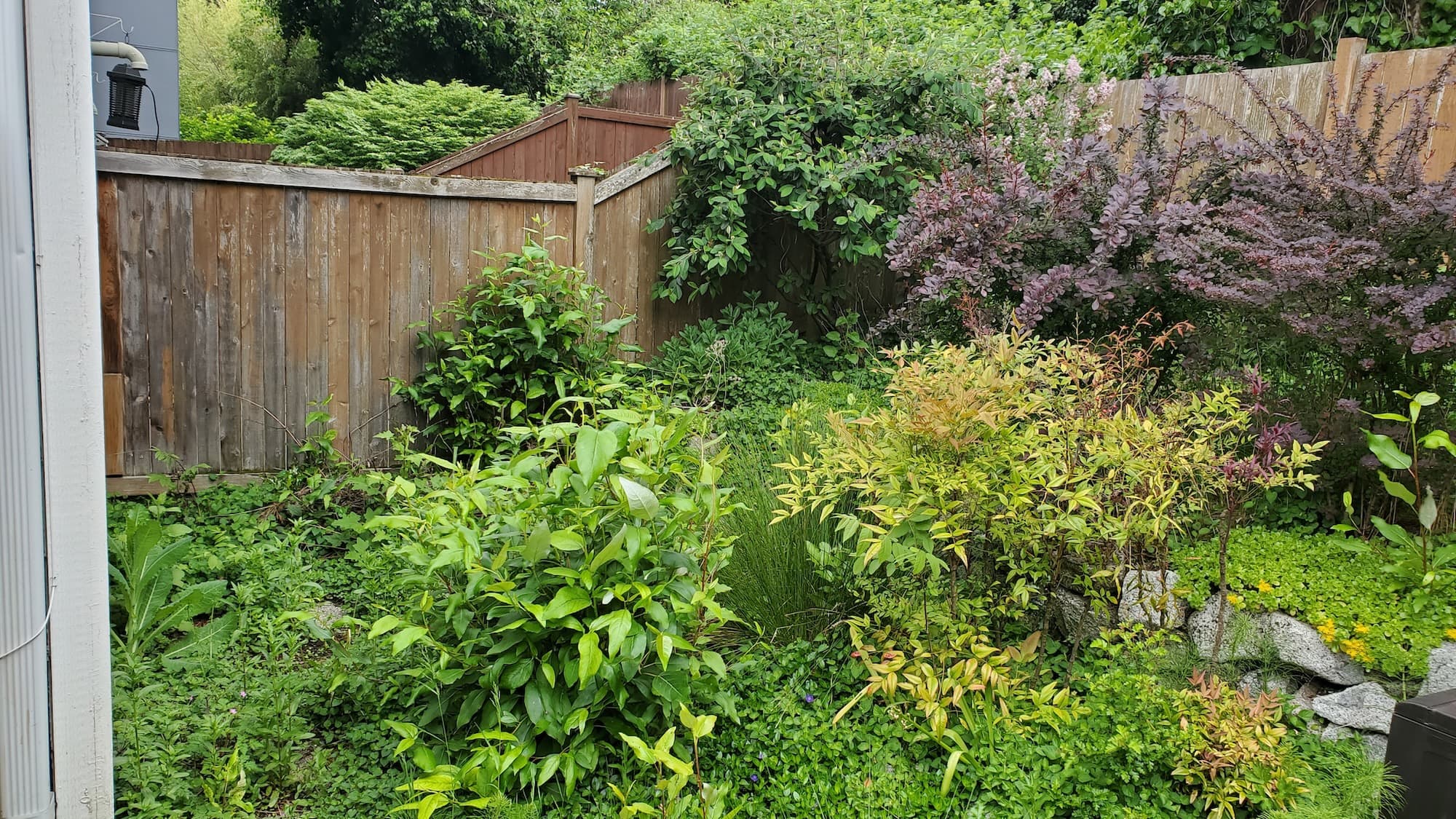West Seattle Wild grapevine removal
Homeowner’s Issue
Wild grapevines are a common headache in West Seattle—especially around Alki, Lincoln Park, and The Junction—where established trees, older fences, and moisture-loving understory create ideal conditions for aggressive vines. West Seattle yards tend to sit on a patchwork of glacial till and compacted soils that hold water in winter and dry out in summer, which means grapevines can smother understory plants in wet months and resprout aggressively in the drier season. Many properties are shaded by tall evergreens or big-leaf maples; that shade encourages moss and ivy alongside grapevines, making invasive-control a two- or three‑front job.
Rainfall is concentrated October–May, so vines that cling to trunks and fences hold moisture against wood and metal through the wet season, increasing rot and rust risk after winter storms. Slopes and narrow rights-of-way—common on Fauntleroy and the hillier blocks—add erosion and access challenges when pulling roots. Local HOAs and neighbors expect tidy, non-invasive yards; letting grapevine run can violate local standards and hurt curb appeal. We focus on sustainable, manual methods—no herbicides—because Seattle’s runoff rules and soil health matter here. Removing grapevine is preventive: it protects trees, reduces winter storm damage, and keeps your West Seattle yard looking intentional, not abandoned.
Our Quality Service
We remove grapevines by hand and with light mechanical tools, then manage regrowth through cultural controls and follow-up. Typical tools: heavy loppers, pruning saws, hand trowels, root bars, and a compact chipper for brush—no chemical sprays. On steeper lots we use rope‑assisted access and extra crew for safety.
Timeline expectations:
- Small yards or fence lines: same‑day service, 2–5 hours.
- Medium jobs: one workday, full crew.
- Large or overgrown properties: 1–2 days plus scheduled follow‑ups at 3–6 months.
Local insight: many West Seattle soils require root removal rather than just cutting at the trunk because vines re-sprout from buried crowns. Summer watering restrictions mean we schedule follow‑ups to avoid peak drought; major work is best late spring through early fall. Benefits include safer trees and fences, improved curb appeal, lower long‑term maintenance, and stable slopes where erosion is a concern.
What’s Included
- Onsite assessment and written estimate.
- Cutting and removal of vine canopy from fences, trees, structures.
- Root excavation for visible crowns in priority areas.
- Chipping or bagging of green waste and haul‑away.
- One scheduled regrowth check at 3 months.
Options / Upgrades:
- Mulch + landscape fabric (spot areas) to suppress regrowth.
- Organic, manual weed control (repeat visits for hand‑pulling).
- Haul‑away (truck) vs. curbside green‑bin sorting.
- Replanting with low‑maintenance natives (sword fern, salal, Oregon grape).
- Fence or trellis repair assessment (no structural guarantees).
Before & After / Expectations
Expect some noise and a tidy pile of debris until we haul or chip it. Access to the work area must be clear of vehicles and delicate garden features; narrow side yards and steep slopes may add time. After we cut and dig, exposed soil can look rough—plan for a light tidy or replanting in the weeks after service.
Care tips for West Seattle:
- Best follow-up window: late spring to early summer for planting natives; avoid heavy winter work on steep slopes.
- Watch for re-sprouts in first 6–12 months; small shoots are easier to remove.
- Moss and ivy thrive in shady, wet corners—treat them with manual removal and mulching rather than chemicals.
- Use drip irrigation or hand-watering on new plantings during summer watering restrictions.
FAQs
Q: Will the vines come back?
A: If crowns or heavy roots are left, yes. We dig crowns where practical and schedule regrowth checks. Multiple small follow‑ups are normal.Q: Do you use herbicides?
A: No. We use only manual, mechanical, and organic cultural controls—no chemical herbicides.Q: How long will the job take?
A: Small sections: a few hours. Whole‑property cleanups: one to two days depending on access and slope.Q: Do you dispose of the debris?
A: Yes. Options: chip on site, haul to green‑waste facility, or leave in curbside green bin per Seattle rules.Q: Any permits required?
A: Usually not for private yards. If work affects a public right‑of‑way or protected trees, we advise checking Seattle Parks or SDOT rules first.
Call to Action
If you’re in West Seattle and ready to reclaim your yard—especially near Alki, Lincoln Park, or The Junction—book a free estimate. We schedule quickly, give clear upfront pricing, and use sustainable methods that protect your trees and soil. Email neatandtidyseattle@gmail.com or call 206‑538‑9344 to set a site visit. Quick turnaround, local experience, and clean work are what we do.










